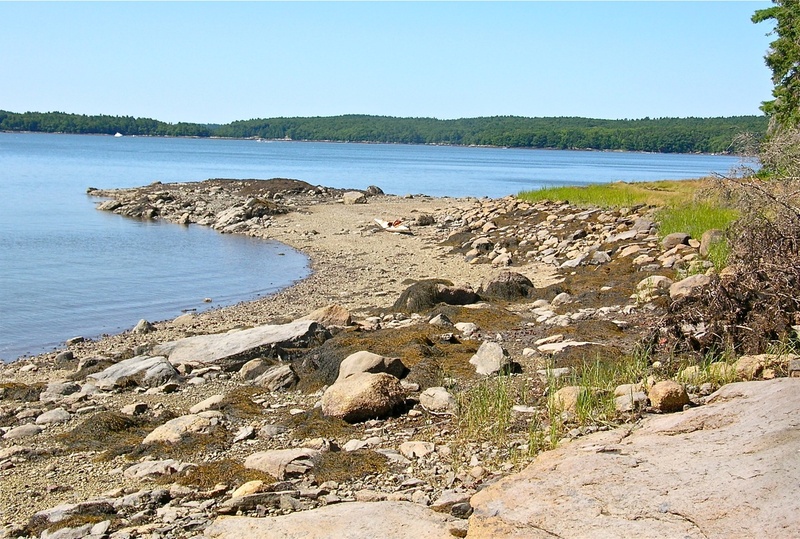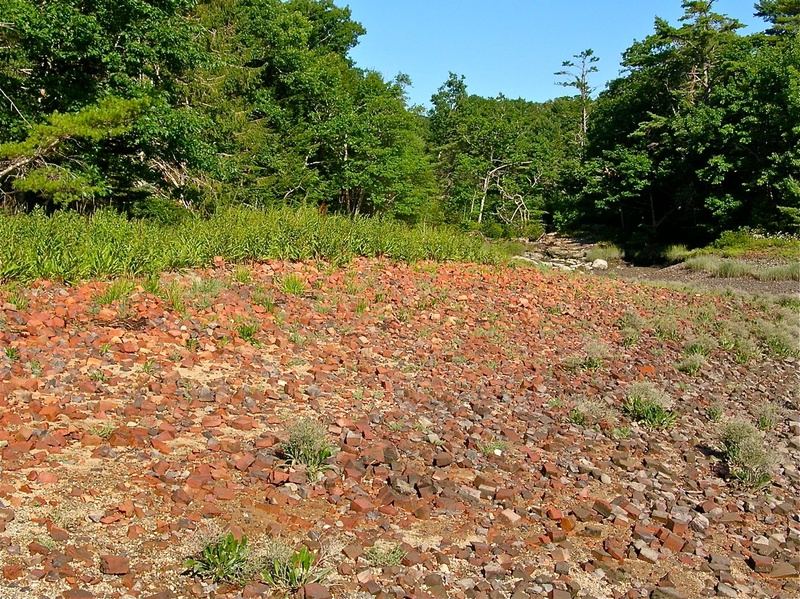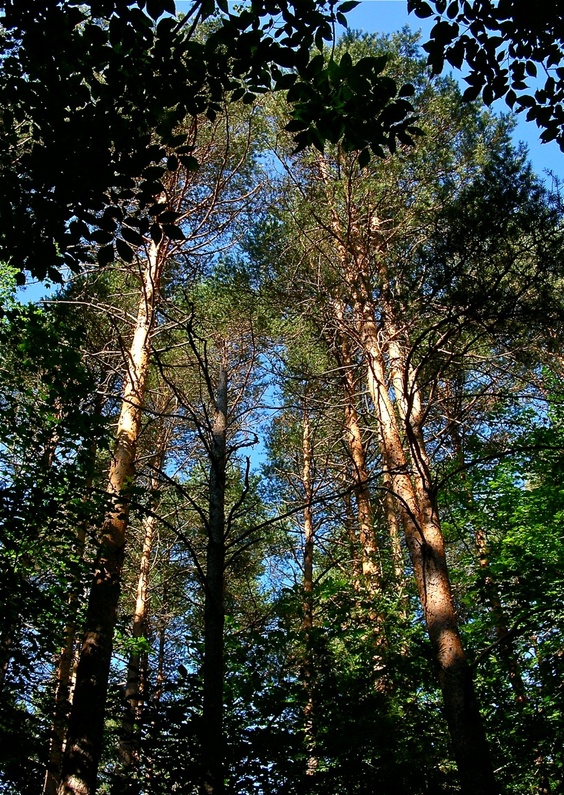A bald eagle sat in a pine, its white head brilliant in the early morning sun. Canada geese poked about the tidal flats. The cries of ospreys echoed from shore to shore. Every hundred yards a blue heron stood still as a statue staring down into the water. Common terns swooped down to pluck delicacies from the river surface.
We had only been in our canoe for 10 minutes and traveled a quarter-mile down the Damariscotta River from the boat launch in downtown Damariscotta. What more could we possibly experience in the next six hours of exploring?
From Damariscotta it is 14 miles down to open ocean. We decided to focus on the western side of the upper river and include a stop at Dodge Point, a secluded 521-acre parcel managed by the Maine Bureau of Parks and Lands. There is surprisingly sparse development along the river, and many of the homes are hidden in the dense canopy of forest that rises up from the water.
Millions of oysters are raised and harvested each year in the Damariscotta River. The warm and nutrient-rich waters are ideal for oyster farming. We saw many floating oyster nurseries strung together on our journey down the river.
The river sustains communities today, as it did from the mid-18th century into the early 20th, when 30 shipyards on the river built schooners that called at ports around the globe. 1850, Maine was the most prolific shipbuilding state in the nation. We saw many decaying shipways overgrown by trees and marsh grass along our route.
The river is tidal, but can be paddled at any period of the tide. At low water you will often be paddling in a foot of water and be a hundred yards from shore. We headed downriver on the ebb tide, and came back on the incoming flow, helped along by a generous current in each direction.
We were amazed at how different everything appeared at high tide, as we glided feet away from colorful ledges, rugged cliffs and large glacial boulders on our early afternoon return.
The topography around this wide river can create stiff winds. An early morning start is advised. Often a sea breeze develops in late morning that helps any paddler heading upriver. We faced a challenging northwesterly wind on our return, so just hugged the western shoreline as much as possible.
Dodge Point provides 8,000 feet of wilderness shoreline. The first thing you will notice as you approach it is a distinctive cusp of red along the high-water mark. This is appropriately called Brickyard Beach. In the halcyon days of shipping, the river supported many brick kilns. We decided to land just south of Brickyard Beach.
After carrying the canoe over 20 yards of ankle-deep mud, we were ready to head into the forest to explore. A man and woman were canvassing the beach with metal detectors. She had found 40 cents so far that morning. Later, when we emerged from the forest we heard the man shout that he had found a musket ball in the sand.
The preserve trails are well signed and easy to follow. Before becoming public land in 1989, the forest was recognized as Maine’s Tree Farm of the Year in 1978. It is easy to see why. It is breathtaking: the tall straight trees, light red scaly bark, long green needles catching the morning sun, all against a brilliant blue sky.
Many consider the Cathedral Pines in Eustis to be the most beautiful stand of red pine in Maine. Dodge Point provides ample competition.
The Shore Trail led us up to views out over Ice Pond toward another striking stand of red pine. Ice harvesting was yet another thriving commercial venture in the 19th century that brought wealth to the area, and made Maine ship captains known around the world.
Back in the canoe, we had paddled only a few hundred yards down the shoreline before another stop was in order at Pebble Beach. We enjoyed a wonderful swim, then scampered up onto a smooth ledge for a half hour and tried to imagine all the creatures, human and wild, that had passed by this spot over the past 12,000 (post-glacial) years.
Oak tree leaves shaded part of the ledge, allowing us to enjoy as much shade or sun as we desired. If we could have stopped time, this would have been the place to do it.
Back in Damariscotta, we loaded up the canoe and walked down Main Street, placed on the National Register of Historic Places in 1979. There is no shortage of fine cafes and coffee houses.
With one last appreciative gaze out over the river we headed onto Route One for the drive home. Would the enticement of a lobster roll at Red’s Eats in Wiscasset impede our homeward progress?
Michael Perry is the former director of the L.L.Bean Outdoor Discovery Schools, and founder of Dreams Unlimited, specializing in inspiring outdoor slide programs. He can be contacted at:
dreams@suscom-maine.net
Send questions/comments to the editors.





Success. Please wait for the page to reload. If the page does not reload within 5 seconds, please refresh the page.
Enter your email and password to access comments.
Hi, to comment on stories you must . This profile is in addition to your subscription and website login.
Already have a commenting profile? .
Invalid username/password.
Please check your email to confirm and complete your registration.
Only subscribers are eligible to post comments. Please subscribe or login first for digital access. Here’s why.
Use the form below to reset your password. When you've submitted your account email, we will send an email with a reset code.